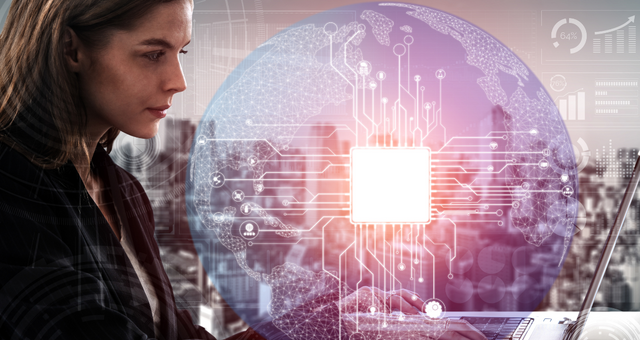A Survey of the Latest Developments in Artificial Intelligence Research

Artificial intelligence has made tremendous advances in recent years and is being applied in many new domains. Powered by deep learning techniques and large datasets, AI is demonstrating new capabilities that may transform our lives. This article will survey the current progress in AI and explore some of the most promising research directions as the field continues to evolve.
Read Also: 20 Best AI Tools For Researchers and Graduate Students https://bit.ly/43xxUSh
Current State of AI
Deep Learning Breakthroughs
Deep learning techniques utilizing neural networks have enabled groundbreaking improvements in areas such as computer vision, natural language processing, machine translation and many other domains. By training deep neural networks on massive datasets containing millions or even billions of examples, researchers have achieved superhuman performance on certain well-defined AI tasks such as image classification and question answering. However, deep learning systems still lack the general common sense reasoning and versatile learning abilities of humans.
Applications of AI
AI is now used widely in areas such as computer vision, natural language processing, robotics, healthcare and autonomous vehicles. Computer vision algorithms powered by deep learning can analyze medical scans, moderate social media content, enable facial recognition and advanced AR/VR experiences. Natural language processing models have revolutionized how humans and AI interact through intelligent assistants, chatbots and translation services. Industrial and service robotics leverage AI for applications such as warehouse logistics and elderly care. While such AI applications deliver benefits, continued progress is needed to fully realize their societal impacts.
Future Directions in AI Research
Self-Supervised Learning
With large labeled datasets requiring extensive human effort to produce, researchers are exploring self-supervised learning techniques that enable models to learn representations of data from the structure and relationships within unlabeled examples. Contrastive predictive coding and masked language modeling approaches are two prominent self-supervised techniques that have achieved impressive results without human supervision. However, challenges remain in transfering the learned knowledge to downstream tasks.
Transfer Learning
Transfer learning approaches aim to apply the knowledge gained while solving one problem to a different but related problem. For example, natural language models pre-trained on large corpora can be fine-tuned for question answering or text classification with relatively little labeled data. In computer vision, pretrained image classifiers have enabled applications with limited training images. Continued progress in transfer learning will be important for applications where labeled data is scarce.
Few-Shot and One-Shot Learning
Few-shot learning aims to enable AI systems to rapidly learn new concepts from just one or a few examples, similar to how humans can easily learn new words or identify unseen objects after seeing just a couple examples. Through meta-learning techniques that learn general learning strategies across tasks, models can now be trained to learn new classes or perform new tasks from very small amounts of data. This promises to make AI far more sample efficient and enable continual learning from new information.
Causal Reasoning
While deep neural networks can identify complex patterns in data, they do not truly understand cause-and-effect relationships like humans. The ability to reason about causes and predict the effects of interventions would empower AI for strategic decision making, scientific discovery and more. Researchers are exploring ways to combine neural networks with causal graphs to help AI systems better handle distribution shifts, selective interventions and counterfactual reasoning. However, challenges remain in learning causal structures from observational data alone.
Read Also: 15 AI Tools for Education Matter for Teachers and Students https://bit.ly/478SXM6
A Responsible Path Forward for AI
Algorithmic Bias
As AI systems are applied for high-stakes tasks like credit scoring, healthcare diagnostics and criminal risk assessment, concerns about unfair or biased outcomes that disadvantage protected groups have increased. Researchers are developing techniques like pre-processing, debiasing and causality-inspired modeling to proactively diagnose and mitigate algorithmic bias during model development. However, fully addressing this issue will require holistic strategies spanning data collection, model design and system deployment.
Analyzing Societal Impacts
While AI is automating certain jobs, it is also creating new types of roles. Researchers are conducting large-scale workforce studies and skills analyses to understand how AI may transform entire industries and shape future skill requirements. Such insights will help guide policies around retraining displaced workers and reforming education. Societal impact reviews of AI technologies could also help ensure their integration considers broader effects on employment, inequality and well-being.
Ensuring Safe and Beneficial Systems
To maximize the benefits of advanced AI while avoiding potential downsides, researchers are actively exploring techniques for building systems that are provably robust, reliable and have a well-defined objective aligned with human values and preferences. Formal methods in AI safety, model oversight through constitutional AI, and developing whole-system approaches are promising directions that could help deliver beneficial machine intelligence as it continues progressing towards more general capabilities.
A Promising Future for AI
This survey highlights both the rapid advances in AI and important open challenges that remain on the path to socially beneficial artificial general intelligence. While deep learning has delivered superhuman performance on specific tasks, achieving human-level versatility and judgment will require addressing difficult research problems in sample efficiency, transfer learning, causal reasoning and value specification. With comprehensive strategies, careful oversight and an ethical mindset, the AI field shows great potential to not just surpass human capabilities – but to do so in a way that improves life for all. Continued progress and partnership between researchers, policymakers and companies will be vital to fully unlock AI's positive societal impacts.